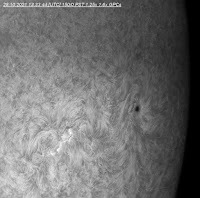*
Sunday 31st 51F, mild, very cloudy and a bit breezy at times. The clocks have gone back.
Today, I must space the lower drawer slides further away from the dome. The difference required is about 50mm. I have a choice. I can add a batten to the outer face of the slit base board. Or add a batten to each, lower, shutter board.
The difficulty is deciding which choice offers the best access to the drawer slide, fixing screws. These screws are exposed. Or hidden behind small holes as the slides open and close.
Having fitted the shutter boards only yesterday I should probably choose to space the bottom, shutter boards. Or I could make new boards out of scraps of 50x150mm. [2x6"] I'll try spacer battens first. To avoid wasting timber.It was just as well I didn't make solid timber boards. I only needed about 20mm thick battens to push the shutters well away from the dome.
There was quite a bit of unexpected work involved. All the screws had to come out of the slides to allow their complete removal. The slit base board had to be removed and raised. Then the battens fixed to the original form boards after they too were removed. Along with their fixing brackets. Another twelve screws each. Thank goodness for rechargeable screwdrivers and Torx screws!
Only then could I reassemble the shutters and slides. Needless to say, the shutters do not yet open smoothly. They flex far too much. Enough that they can be open at top. While the bottom ends are still half closed.
Having fitted it all back together I made a disappointing discovery. The shutters have a 4" gap [100mm] in the middle when fully closed at the top and bottom. The outer, shutter ribs need to be lifted relative to the inner ones. Which means that the bottom boards have to be slanted within the shutters. Or the slides have to be slanted on the battens.
I have seen this problem repeatedly while working on the shutters before the slides were fitted. Adding quite a small amount of packing under the outside ribs closes the yawning gap in the middle. There is considerable, negative, geometric advantage due to the ratios involved. [Negative leverage?] Imagine a wedge hammered into the saw cut of a tree being felled.
The problem is in discovering how much the outer ribs need to be lifted. I may be able to correct the gap by removing the slide screws and packing up the ribs. Then refitting the slides in the new position. A bit of extra lift will avoid repeating the exercise.
The gap problem may simply be that there is no fixing on the outboard ends of the bottom boards. I haven't fitted any brackets there yet. Relying, instead, on the massive inner brackets. Perhaps these brackets are flexing more than I imagined under the considerable weight of the shutters. The slides are also doing their own supporting. Though they are at the thinner, most flexible end of the 3-slide mechanisms.
Once I have the ribs packed up enough I can temporarily fix the boards with single screws through the outer ribs. Prior to fitting the brackets. I don't want to split the bottom boards by screwing into the end grain. There really isn't much meat at that end. So I had better pre-drill for self tapping wood screws. I have some sturdy but narrow brackets ready to fit.
*




















































